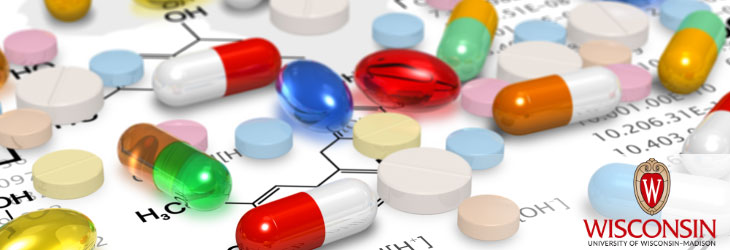Therapeutics & Vaccines

TLR Agonists for Reducing Activation-Induced PD-1 Expression on T Cells, Improved Anti-Tumor Response
WARF: P170048US02
Inventors: Douglas McNeel, Christopher Zahm
The Wisconsin Alumni Research Foundation (WARF) is seeking commercial partners interested in improving cancer vaccine efficacy by co-administering agonists of specific Toll-like receptors (TLRs).
When delivered with an anti-prostate tumor DNA vaccine, the agonists have been shown to reduce PD-1 expression on activated immune cells and almost completely suppress tumor growth in an in vivo cancer model.
Overview
Current anti-cancer DNA vaccines are safe and immunologically effective, but would be still more effective if they could elicit a stronger anti-tumor response and require fewer administrations. For this reason, many recent studies have sought to identify methods for increasing the efficiency of plasmid DNA gene transfer and/or immunogenicity of the DNA.
Current methods for increasing the immunogenicity of anti-cancer DNA vaccines have had limited success in vivo. One major challenge is the increased expression of PD-1, a regulatory molecule, on activated immune cells that diminishes the efficacy of the treatment.
Current methods for increasing the immunogenicity of anti-cancer DNA vaccines have had limited success in vivo. One major challenge is the increased expression of PD-1, a regulatory molecule, on activated immune cells that diminishes the efficacy of the treatment.
The Invention
UW–Madison researchers led by Douglas McNeel have made the surprising finding that agonists of certain TLRs, specifically TLR1/2 and TLR7, are able to increase the anti-tumor response of activated immune cells (e.g., CD8+ T cells). This increased anti-tumor response reduces and inhibits tumor growth, and, in some cases, tumor ablation, in a mouse model.
The researchers have found that when an immunotherapeutic agent such as a vaccine is administered in combination with a TLR1/2 agonist and/or a TLR7 agonist, antigen-specific immune cells are activated and PD-1 expression in these activated immune cells is down-regulated and/or inhibited such that immune response to the antigen is enhanced. This result is specific to certain TLR agonists (e.g., TLR1/2 agonist, TLR7 and TLR9 agonist) and is not applicable to all TLR agonists. Tumors completely regressed in approximately half of the mice treated with a DNA vaccine in combination with a TLR1/2 agonist or TLR7 agonist.
The researchers have found that when an immunotherapeutic agent such as a vaccine is administered in combination with a TLR1/2 agonist and/or a TLR7 agonist, antigen-specific immune cells are activated and PD-1 expression in these activated immune cells is down-regulated and/or inhibited such that immune response to the antigen is enhanced. This result is specific to certain TLR agonists (e.g., TLR1/2 agonist, TLR7 and TLR9 agonist) and is not applicable to all TLR agonists. Tumors completely regressed in approximately half of the mice treated with a DNA vaccine in combination with a TLR1/2 agonist or TLR7 agonist.
Applications
- Enhancing cancer immunotherapy
- Could be used in conjunction with Dr. McNeel’s prostate cancer immunotherapeutic agents currently in clinical trials
Key Benefits
- Potential to improve cancer vaccine efficacy
- Addresses a recognized challenge in the field (i.e., PD-1 over-expression)
Stage of Development
The researchers have data showing that delivery of either a TLR1/2 agonist (PamCSK4) or a TLR7 agonist (Gardiquimod) with an anti-tumor vaccine improved tumor growth suppression. Stimulation with TLR agonists at the time of vaccination led to tumor growth suppression significantly better than the effect seen in animals given only the vaccine or the TLR agonist alone.
Additional Information
For More Information About the Inventors
Related Technologies
For current licensing status, please contact Andy DeTienne at [javascript protected email address] or 608-960-9857